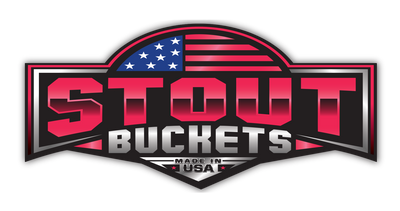The Role of Skid Steers in Forestry and Tree Management

Forestry operations and tree management projects require equipment that delivers power, precision, and versatility. That’s where the skid steer comes in. These compact, high-performing machines have become essential across logging sites, reforestation zones, and land clearing operations.
The role of skid steers in forestry and tree management has expanded thanks to the wide range of attachments available today. They’re now the go-to solution for stump grinding, brush clearing, and debris hauling.
Skid steers streamline jobs that used to take multiple machines and several workers. Their compact size allows them to move through dense forests or rugged terrain with ease, while their hydraulic power supports a growing list of heavy-duty attachments. Whether you’re managing undergrowth, removing trees, or prepping land for planting, an equipped skid steer can do it all efficiently.
Versatility on Rugged Terrain
Forestry environments are unpredictable. Rocky soil, uneven terrain, and tight pathways are all part of the job. Skid steers shine in these conditions thanks to their small footprint, high maneuverability, and durable builds. Unlike large machines that may get stuck or require extensive space to operate, skid steers can zip through narrow trails or work between standing trees without disruption.
Operators commonly choose track-mounted skid steers for forestry work due to their enhanced traction. These models handle muddy, sloped, or soft terrain without sinking or sliding. The low ground pressure of tracked units also minimizes damage to soil structures and sensitive environments. This is a major advantage for sustainable forestry practices.
Skid steers are also compatible with hundreds of attachments. Forestry workers can switch out the attachments as needed without hauling in extra machinery. The equipment’s adaptability makes it a practical, cost-effective tool for crews managing multiple types of terrain and tasks.
Key Attachments for Forestry Work

Attachments transform skid steers into multi-purpose machines. Forestry crews often depend on specific add-ons designed for heavy cutting, lifting, clearing, or grinding. These tools allow one machine to complete a variety of tasks, improving job efficiency and reducing labor costs.
Some of the most used skid steer attachments in forestry and tree management include:
- Forestry mulchers shred branches, brush, and small trees into mulch. This helps manage undergrowth and reduce fire hazards.
- Stump grinders grind stumps below grade, speed up site prep, and eliminate tripping hazards.
- Brush cutters cut through dense vegetation. They’re ideal for maintaining trails or clearing large swaths of land.
- Grapple buckets grab, lift, and carry logs, limbs, or debris with secure hydraulic claws.
- Tree shears slice through tree trunks or thick branches cleanly and safely.
The ability to swap attachments makes it easy for forestry professionals to respond to job site demands quickly. Instead of needing a separate piece of equipment for each task, you can outfit a single skid steer to clear, grind, haul, and load materials with minimal downtime.
Improve Efficiency and Reduce Labor
Forestry work is physically demanding. Cutting trees, clearing brush, and grinding stumps takes a toll on workers and the equipment.
Skid steers help reduce physical strain by automating tasks and increasing job speed. They allow smaller crews to tackle bigger projects while minimizing fatigue and injury risk.
Manual stump removal or brush hauling can take hours or days, depending on the size of the job. With a skid steer equipped with the right attachment, you can accomplish the same work in a fraction of the time. For example, using a skid steer stump grinder to level a large root system is exponentially faster and safer than digging or burning it.
In addition to improving speed, skid steers reduce wear and tear on workers’ bodies. Repetitive lifting, bending, and chopping are major contributors to job site injuries. Skid steers handle the heavy lifting and grinding, reducing risk and improving long-term team productivity.
Operators also benefit from better visibility and ergonomic cabins in newer skid steer models. These enhancements make it easier to work long shifts in dense forests or remote locations while staying focused and comfortable. In short, skid steers make tree management and forestry work safer, faster, and less exhausting.
Support Sustainable Land Management
Sustainability is an increasing priority in forestry. From preserving wildlife habitats to preventing soil erosion, today’s forestry professionals balance productivity with conservation. Skid steers play a major role in supporting responsible land use thanks to their precision, adaptability, and low environmental impact.
Lightweight compared to traditional bulldozers or harvesters, skid steers reduce ground disturbance and allow for selective clearing. Crews can target invasive species, manage storm damage, or remove dead trees without disrupting healthy vegetation nearby. The fine control of attachments like tree shears or mulchers ensures minimal collateral damage, which is crucial when working in protected or sensitive environments.
In reforestation or thinning projects, skid steers excel at preparing land with precision. They can clear just enough vegetation to make room for new growth while avoiding excessive clearing.
This controlled approach helps protect soil health, promotes biodiversity, and preserves valuable topsoil. Additionally, skid steers are more fuel-efficient than many large forestry machines, lowering emissions and reducing fuel costs.
Long-Term Investment for Forestry Operations

Durability, reliability, and return on investment are important factors to consider when making forestry equipment decisions. Skid steers offer an excellent balance of affordability and performance, making them a smart long-term investment for land managers and tree care companies.
With regular maintenance and the right attachments, a single machine can serve dozens of purposes across many years of operation. Skid steers are a sound investment because they offer:
- Decreased operating costs compared to dedicated forestry equipment.
- Multipurpose operations that support quick attachment changes.
- Compact storage, so they’re easier to transport and store than large logging machinery.
- Year-round utility for projects including snow removal, fencing, grading, and more outside of forestry season.
For growing operations or smaller forestry outfits, skid steers are a gateway to scaling up services without overcommitting on budget or space. They give teams the flexibility to offer more specialized work, like stump grinding or land clearing, without investing in multiple machines.
Many forestry services also report lower maintenance costs on skid steers versus other types of equipment. The machines can handle rugged use, and with proper care, can stand up to the demands of dense forests and tough terrain.
Skid Steers: A Smart, Strategic Purchase
The role of skid steers in forestry and tree management has grown dramatically as the industry evolves toward more flexible, sustainable, and efficient practices. These machines offer unmatched versatility, power, and control in environments where mobility and multi-functionality are essential.
Whether it’s clearing brush, hauling logs, or operating a skid steer stump grinder, these compact powerhouses help forestry teams do more with less. For any operation looking to improve efficiency, reduce labor demands, and support long-term sustainability, adding a skid steer to the equipment lineup is a smart, strategic move. Visit Stout Buckets today to find the perfect skid steer attachments for your needs.


